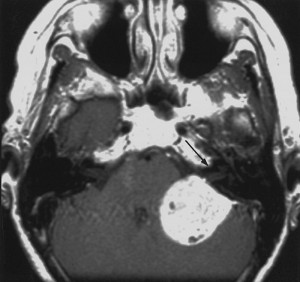The most frequent form of central nervous system melanoma is metastasis. Primary melanoma of the CNS arises from the leptomeninges or dura mater, is rare and represents 1% of all melanomas. When the leptomeninges are involved, both the brain and the spinal cord can be involved.

Involvement of the basal cisterns results in hydrocephalus and sometimes also intracerebral or subarachnoid hemorrhage. Cases of primary melanoma of the pineal gland are very rarely described. Melanomas that metastasize in the brain mainly affect the cerebral hemispheres, while spinal cord metastases appear rare and are often incurable and treatment tends to reduce the tumor size with surgery or radiotherapy. The use of steroids can reduce the symptoms induced by cerebral edema.

There is a hereditary disorder called neurocutaneous melanosis in which there are giant melanocytic nevi mainly in the neck and trunk and cerebral melanoma and it is apparently due to an error in the morphogenesis of the embryonic neuroectoderm. Fewer than 200,000 people are reported to have the disorder in the United States population. Neurological complications are: hydrocephalus, epilepsy, cranial nerve dysfunction, signs of spinal cord or spinal root involvement.